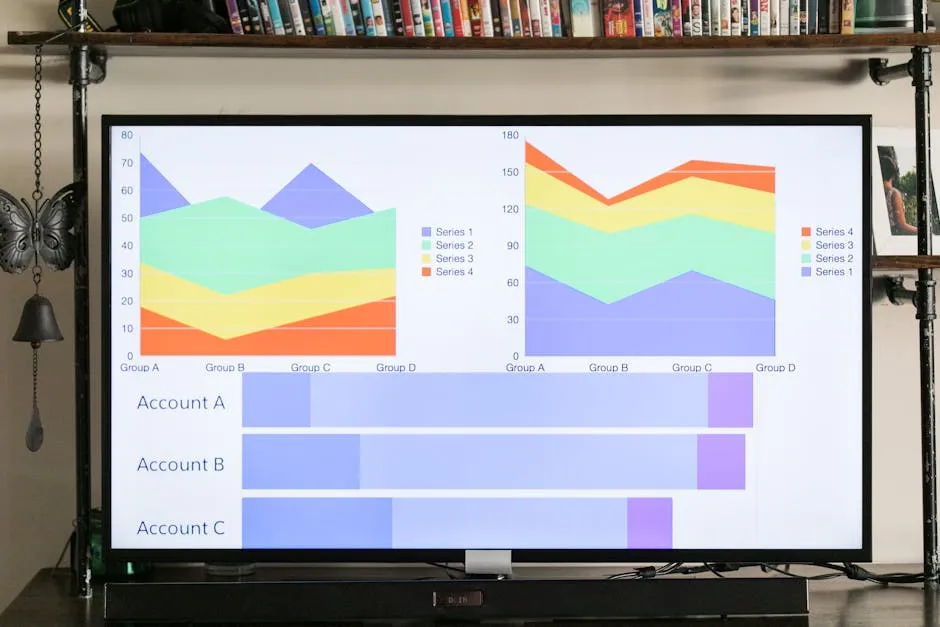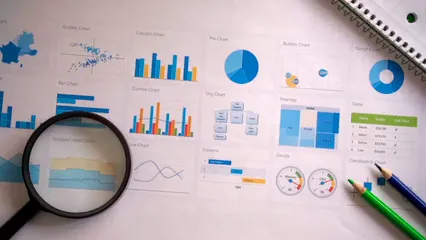Introduction
Statistics holds immense importance across various fields. From science to business, statistical methods help us interpret data and make informed decisions. Ever wondered how scientists validate their hypotheses? Or how businesses gauge customer satisfaction? Statistics is the backbone of these analyses.
But here’s the kicker: simply understanding concepts isn’t enough. Mastery comes with practice. Just like you wouldn’t ace your favorite video game without logging hours on it, you can’t expect to excel in statistics without rolling up your sleeves and getting to work. Practice helps solidify your understanding, making complex ideas feel like second nature.
This article aims to be your go-to guide for statistics practice. We’ll cover resources, handy tips, and various types of practice problems you can tackle. Whether you’re a student preparing for exams or a professional brushing up on skills, this guide has something for you. So, grab your calculators and let’s turn those statistical frowns upside down!

Understanding Statistics
What is Statistics?
Statistics is the science of collecting, analyzing, and interpreting data. It’s crucial in data analysis, whether you’re studying the impact of climate change or predicting market trends. Statistics empowers us to make sense of numbers and draw meaningful conclusions.
We can broadly categorize statistics into two main branches: descriptive and inferential statistics. Descriptive statistics summarizes data through numbers and visuals, like charts and graphs. Think of it as the cherry on top that helps us understand what our data looks like at a glance.
Inferential statistics, on the other hand, allows us to make predictions or inferences about a larger population based on a sample. It’s like taking a small bite of a cake to guess the flavor of the entire dessert. By using sample data, we can test hypotheses and derive conclusions that extend beyond our immediate observations.
Key Concepts in Statistics
Understanding foundational concepts in statistics is essential. Let’s break down some key terms:
- Population: The complete set of items or individuals from which data can be collected. Learn more about population of interest statistics.
- Sample: A subset of the population, selected for analysis. Discover why a sample statistic will not change from sample to sample.
- Parameter: A numerical value that summarizes a characteristic of a population. Understand how to prove parameter space contains an open set.
- Statistic: A numerical value that summarizes a characteristic of a sample. Check out the AP statistics formula sheet for more insights.
Now, let’s talk about types of data:
- Qualitative vs. Quantitative: Qualitative data describes categories or characteristics, while quantitative data represents numerical values that can be measured.
- Discrete vs. Continuous: Discrete data consists of distinct, separate values (like the number of students in a classroom), whereas continuous data can take any value within a range (like height or weight).
These concepts form the bedrock of statistics, guiding us through the process of data analysis and interpretation. Understanding them will make your journey through the world of statistics smoother and more enjoyable. So, buckle up and get ready for some number crunching!

Types of Statistical Practice
Descriptive Statistics
Descriptive statistics summarize and describe the main features of a dataset. They help you understand your data better. The first step involves measures of central tendency: mean, median, and mode.
Mean is the average. You calculate it by adding all values and dividing by the number of values. If you’ve got a dataset like {2, 4, 6, 8}, the mean is (2 + 4 + 6 + 8) / 4 = 5. Learn what does mean identically distributed in statistics.
Median is the middle value when numbers are arranged in order. For the same dataset, the median is 5, as it’s the average of the two middle numbers (4 and 6). Explore statistics on Poland’s median salary in 2024 for more context.
Mode is the number that appears most often. In {1, 2, 2, 3}, the mode is 2. Check out the comprehensive guide to statsmodels residuals statistics.
Next up are measures of variability, which show how spread out your data is.
Range is the difference between the highest and lowest values. In {3, 7, 4, 2}, the range is 7 – 2 = 5. For further understanding, review the Orange County CA crime statistics.
Variance measures how far each number in the set is from the mean and from each other.
Standard deviation is the square root of variance, giving you a sense of how much values deviate from the mean on average.
Let’s put this to practice. Consider the following dataset: {10, 12, 23, 23, 16, 23, 21}.
- Mean: (10 + 12 + 23 + 23 + 16 + 23 + 21) / 7 = 17.14
- Median: The sorted dataset is {10, 12, 16, 21, 23, 23, 23}. The median is 21.
- Mode: The mode is 23, as it appears most frequently.
- Range: 23 – 10 = 13.
- Variance: Calculate the mean first, then find the squared differences. The variance is 24.71.
- Standard Deviation: The square root of 24.71 is about 4.97.
Practice Problems:
- Find the mean, median, mode, range, variance, and standard deviation of the dataset {5, 7, 9, 11, 11, 13, 15}.
- Given the data {30, 32, 34, 34, 35, 36, 38}, what are its descriptive statistics?

Inferential Statistics
Inferential statistics allow us to make predictions about a population based on a sample. This section will focus on two key concepts: hypothesis testing and confidence intervals.
Hypothesis Testing
Hypothesis testing assesses two opposing statements about a population parameter. The null hypothesis (H0) claims no effect or difference. The alternative hypothesis (H1) suggests there is an effect or difference. Refer to the statistics hypothesis testing cheat sheet for a comprehensive guide.
For example, H0 might state that a new teaching method does not improve test scores compared to the standard method. H1 would state that it does.
Once hypotheses are set, data is collected, and statistical tests are applied.
Type I error occurs if you reject the null hypothesis when it is true. Imagine you declare the new method effective, but it actually isn’t.
Type II error is failing to reject the null hypothesis when it is false. You might conclude there’s no difference when the new method does improve scores.
Here’s a practice problem:
- A new drug claims to lower blood pressure. H0: Drug has no effect. H1: Drug lowers blood pressure. You conduct a study. What are your H0 and H1? What are the possible Type I and Type II errors?

Confidence Intervals
Confidence intervals provide a range of values, derived from a sample, that likely contain the population parameter. They give a sense of uncertainty around a statistic.
For example, if a survey finds that 60% of voters support a candidate, a 95% confidence interval might be 55% to 65%. This means we are 95% confident that the true population proportion lies within this range.
Here’s a practice problem:
- Calculate a 95% confidence interval for the mean of the dataset {4, 5, 6, 7, 8}.
Understanding these concepts is essential for interpreting data correctly and making informed decisions.

Resources for Statistics Practice
Online Platforms for Practice
When it comes to leveling up your statistics game, online platforms are your trusty sidekicks. Let’s explore a few that offer fantastic opportunities for practice, including free practice tests and quizzes.
Varsity Tutors provides a treasure trove of resources. With a variety of practice tests, you can tackle everything from basic concepts to advanced topics. After each test, you’ll receive detailed scoring results. This feedback is like having your personal coach, pointing out where you shine and where you may need a little more practice. Check out their Statistics Practice Tests to get started.
Study.com is another great platform offering an extensive library of practice questions. You can choose from numerous topics, ensuring a well-rounded approach to your studies. Each question comes with explanations, making it easier to understand the concepts behind the answers. Take a look at their vast resources here.
Wiley offers a unique experience with their “1,001 Statistics Practice Problems For Dummies.” This resource is packed with practice problems ranging from mean calculations to hypothesis testing. Each problem includes a detailed solution, which is invaluable for honing your skills. Check out more about this online subscription here.
These platforms categorize questions by topic, helping you focus on your weak areas. So, grab your laptop, fire up those practice tests, and watch your statistics skills soar!

Books and Study Materials
Books remain a steadfast resource in the world of learning, and statistics is no exception. A couple of standout titles can guide you through the murky waters of numbers.
First up is “The Basic Practice of Statistics” by David S. Moore. This textbook is a bestseller for a reason. It emphasizes statistical thinking over mere calculations, featuring engaging narratives and practical exercises. This approach makes complex concepts feel relatable and easier to grasp. It’s a solid foundation for anyone looking to build their statistics knowledge. You can find it here.
Another fantastic resource is “Statistics: 1001 Practice Problems For Dummies.” This book offers a staggering collection of practice problems covering all major topics in statistics. Each problem comes with a detailed answer explanation, ensuring that you not only get it right but also understand why. Perfect for learners at any level! You can check it out here.
Structured textbooks like these help reinforce learning and provide a comprehensive overview of statistical concepts. They also serve as excellent reference materials when you need a quick refresher. So, grab one or both and dive into the wonderful world of statistics!

Effective Strategies for Statistics Practice
Setting Goals
Setting specific, measurable goals is crucial for effective practice. Think of goals as your roadmap. Without them, you might end up wandering aimlessly through a forest of numbers.
Start by identifying what you want to achieve. Maybe you want to master hypothesis testing or understand probability distributions. By breaking your goals into smaller, achievable chunks, you can track your progress and stay motivated.
For instance, try mastering one concept per week. One week could be all about mean and median. The next week? Variance and standard deviation. This method keeps things fresh and manageable. You’ll feel accomplished as you tick off each goal. Plus, who doesn’t love checking things off a list?
But wait, there’s more! To keep your study space organized and inspiring, consider using a Desk Organizer. A tidy workspace can do wonders for your focus and productivity!

Active Learning Techniques
Now, let’s talk about learning techniques that actually stick. Solving practice problems is like hitting the gym for your brain. The more you practice, the stronger your skills become. Websites like Varsity Tutors and Study.com offer a treasure trove of practice tests to sharpen your statistics knowledge.
Engaging in group discussions is another powerful tool. Discussing concepts with peers can breathe life into dry material. You gain new perspectives and might even discover shortcuts to solving problems. Plus, teaching concepts to others is a fantastic way to solidify your own understanding. It’s like being your own personal tutor.
And don’t overlook the power of flashcards! Use them for key terms and formulas. Flashcards are your best friends when it comes to memorization. They’re perfect for on-the-go learning, too! Just whip them out whenever you have a few spare moments. Grab a set of Study Flashcards for Statistics to make the most of your study sessions!
Incorporating these active learning techniques will make your statistics practice more dynamic and enjoyable. Before you know it, you’ll be tackling statistical problems like a pro!

Tracking Progress
Tracking your progress in statistics is as vital as a GPS on a road trip. Without it, you might find yourself lost in a maze of numbers. Quizzes and practice tests are the perfect tools for this journey. They give you a chance to assess your skills and identify areas needing improvement. Plus, nothing beats the thrill of seeing your scores rise!
Self-assessment is crucial. It encourages reflection on what you’ve learned and how to apply it. After taking a quiz, don’t just glance at your score and move on. Dive deeper! Analyze which questions stumped you. Were they about probability distributions or hypothesis testing? This reflection helps you target your study sessions.
Consider keeping a study journal. Jot down your quiz scores, concepts you’ve mastered, and those pesky topics still giving you trouble. This way, you can visualize your growth and adjust your study strategies accordingly. Another method is to set specific goals, such as improving your score by 10% in your next practice test.
Engaging in discussions with fellow learners can also enhance your understanding. Share your quiz experiences and learn from others. Sometimes, a simple explanation from a peer can illuminate a concept that had you scratching your head.
Lastly, celebrate your victories, big or small! Did you ace a particularly tricky quiz? Reward yourself with a treat (maybe a slice of cake or a fun movie night). Positive reinforcement boosts motivation and keeps the momentum going.

Conclusion
Mastering statistics requires consistent practice. Think of it as a muscle. The more you exercise it, the stronger it gets! Quizzes and practice tests not only reinforce your knowledge but also build confidence. You’ll find that regularly challenging yourself with problems transforms daunting concepts into familiar friends.
Utilizing the resources and strategies provided in this guide can significantly enhance your understanding of statistics. From online platforms to textbooks, a wealth of materials is at your fingertips. Embrace them! They’re designed to make learning both effective and enjoyable.
Statistics plays a critical role in diverse fields. Whether in healthcare, business, or social sciences, the ability to interpret data is invaluable. Informed decisions depend on sound statistical analysis. So, as you sharpen your statistics skills, remember: you’re not just learning; you’re equipping yourself for real-world challenges. Keep practicing, stay curious, and let those numbers work for you!

FAQs
What are the best resources for practicing statistics?
For effective statistics practice, consider these options: Varsity Tutors: Offers a variety of free practice tests and quizzes tailored to different topics. You can track your scores and identify areas to improve. Check it out here. Study.com: Features comprehensive practice questions covering a range of topics. Each question includes detailed explanations for better understanding. Explore their offerings here. “The Basic Practice of Statistics” by David S. Moore: This textbook emphasizes statistical thinking with engaging narratives and practical exercises. It’s a must-have for any statistics learner. Find it here. “Statistics: 1001 Practice Problems For Dummies”: A fantastic resource for hands-on practice, offering numerous problems across all major topics. This book ensures you grasp the concepts thoroughly. Check it out here.
How can I improve my understanding of statistics?
Improving your grasp of statistics involves adopting effective study habits: Consistent practice: Regularly solve problems and take quizzes to reinforce learning. Engage with peers: Discuss concepts and share insights with classmates or study groups. Use diverse resources: Mix textbooks, online courses, and videos to keep your learning dynamic. Teach others: Explaining concepts to someone else can deepen your understanding.
What topics should I focus on when studying statistics?
When studying statistics, prioritize these key areas: Descriptive statistics: Understand measures of central tendency (mean, median, mode) and variability (range, variance, standard deviation). Probability: Familiarize yourself with basic concepts, rules, and important distributions (normal, binomial, Poisson). Hypothesis testing: Master the process, including null and alternative hypotheses, along with Type I and Type II errors.
Are there any free online resources for statistics practice?
Absolutely! Here are some excellent platforms offering free statistics practice: Varsity Tutors: Access their free practice tests and quizzes to test your knowledge. Study.com: Offers a selection of free practice questions with explanations. Stattrek: Provides a variety of practice tests, especially useful for AP Statistics.
How important is statistics in everyday life?
Statistics plays a crucial role in everyday decision-making. From evaluating medical studies to understanding market trends, statistics helps us make informed choices. Professionals in fields like healthcare, finance, and marketing rely on statistical analysis to drive strategies and improve outcomes. So, mastering statistics isn’t just academic; it’s a vital life skill!
Don’t forget to fuel your study sessions with some caffeine! A good Coffee Maker can be a lifesaver for those late-night study marathons.
Please let us know what you think about our content by leaving a comment down below!
Thank you for reading till here 🙂
All images from Pexels




